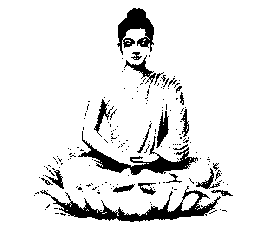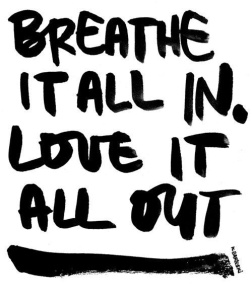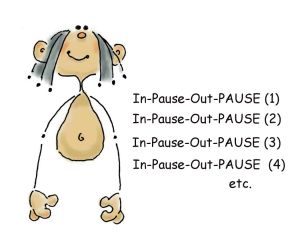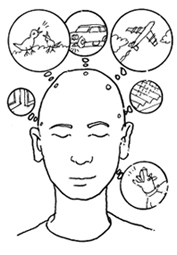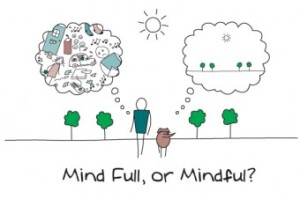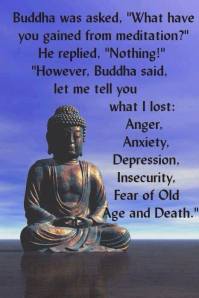
So often you come across ‘great’ meditation master’s programs on TV or in the Oprah Book of the Month Club; offering the Buddha‘s teaching‘s for the low low price of only $19.99 plus S&H. You hear of great master’s setting up shop all over the world collecting great followings of people willing to do and say almost anything as if this person were the Buddha himself. It’s funny how the Buddha said that even he was irrelevant and all that mattered were his teachings…yet?
He appointed no successor and as he passed, he told Ananda “It may be, Ananda, that some of you will say, ‘without the Buddha, there is no teacher for us’. No, Ananda, you should not think in this way. Whatever doctrine and discipline taught and made known by me will be your teacher when I am gone.“. He didn’t say go listen to so and so or appoint this person or that person as the new authority. The authority was the dharma. It and it alone was the highest teaching and nothing needed to be added or changed.
There were no ideas of lifetimes and lifetimes of struggle in order to become awake. If you look at the oldest of the Pali cannon, it appears that many people became awake around the Buddha. The Buddha gave the path..the Four Noble Truths and the Eight Fold Path. This is the method, this is the key!
Now, we see great centers of selling instead of learning. We see devotion to the whims of the guru (which is actually a Hindu Brahmanic idea, not Buddhist) and a great rash of added teachings, laws, orders and beliefs that do not stem from the Buddha’s lips, but by Cult(ural) beliefs instead.
That being said, there is a necessity for dharma friends and teachers. The Buddha gave the method and teachings, but it is helpful to have teachings from wise and compassionate teachers who have spent their lives living the words of the Buddha. These teachers are there to encourage you, not to serve themselves.
So know this…you will know a tree by its fruit my friends! A good tree gives good fruit, a bad tree gives rotten fruit! The dharma is not for sale! The dharma is to be given freely and out of love and compassion for every living being, never for self-aggrandizement or profit! The dharma is not for the teachers, the center nor those exclusive students benefit. Remember, the Buddha himself said that if even HIS OWN WORDS offended your conscience, then ignore them!
If anything asked of you goes against what the Buddha himself taught or did, it is not dharma! Dharma is to uplift, to free, to liberatee and to educatee. True dharma will never bring suffering or sorrow. Remember, the Buddha was the great liberator. His words and teachings say, “I teach suffering and the END OF SUFFERING!”
True dharma starts where you are! It means you have compassion on yourself and spread that outwards. If you cannot live the true dharma within your family, your relationships, your colleagues etc. you will not find it by abandoning them. The dharma is not out there somewhere…it is right where you are, here and now. Again, the Buddha said, “do not seek happiness without…” His was the middle way. Living with what you have, where you are, as long as it does not stray from the eight-fold path is perfectly fine. Have your belongings, just don’t belong to them.
So often, I see his words corrupted. Supposed great teachers and modern scholars justify things by using corrupted measures and means; especially when it comes to violence! I have heard all too often that Buddhism does not teach non violence; “because the Samurai were Buddhist.” I am sorry my friends, but no, they were not. True Buddhism insists upon non violence in not only physical means but even in your words and thoughts!
Emptiness is not withdraw from or the ignoring of something. Emptiness means non duality. No attachment to the idea of a separate self. True emptiness means ONLY that you are empty of a false ego. Empty from the idea that you are separate from your neighbor, or the fish in the river, the trees and wind; that you are empty of pride and delusion. True emptiness is living solely in a state of compassion for all beings and all life! In order to be truly empty, one must then be also truly non violent.
This non violence spreads to not simply actions of direct violence like war and abuse but in how we treat people on a day to day basis. Ahimsa is non violence in action, speech and thought. So causing suffering through control, neglect, abandonment of family and children, relationships, your work and your daily responsibilities, ignoring the suffering of the poor and animals are also forms of violence. If your actions cause the suffering of others, especially the innocent, the child, the weak, the sick, the poor, the voiceless animal, the pollution and destruction of earth…it is not dharma.
Dharma starts and ends in compassion. Compassion for yourself and compassion for others. However, compassion for your self does not mean at the expense of others. The true practitioner of the dharma will take on the suffering of others in order to heal them. They will conquer hate with love, war with peace, greed with generosity. If our actions lead to the suffering of others, especially our families, relationships, friends and those already suffering, then we are only adding to future violence and malcontent.
So often we take the meaning of renunciation to mean monastic life. Monastic life is fine for those who are not already married or with children and family. To abandon is an act of violence and is only for the satisfaction of the self. In reality, renunciation means simply non attachment to worldly praise or gain. The eight-fold path teaches right livelihood. The Buddha knew that we had to work and live and interact in society.
The Buddha’s stances on a monastic community that followed him probably stemmed from practicality more than belief. His community begged for food and lodging, so if they were sexually active and bringing more children into their community of beggars, it would create a greater burden on the society they lived in. This would be wrong action on their part. The Buddha knew this but he also knew that the vast majority of people and that the cycle of life requires sexual interaction and birth and death.
Take these things into account as you find teachings and teachers. Don’t stray blindly from the path set down by the Buddha. His teachings were clear and open. The four noble truths and the eight fold path. The truth of suffering and the end of suffering. How our actions effect others is the sign of whether or not we are living and following the true dharma.
Are we in pain? Are we causing pain? Are we offering compassion? Are we alleviating suffering? Right view, right intention, right speech, right action, right livelihood, right effort, right mindfulness and right concentration. This path is for the cessation of suffering, both personal and social. We cannot be the cause of suffering and freedom at the same time.
So, to summarize, dharma is free and it is freedom. It is not selling and collecting. It is without false pride and false humility. It is given freely to all beings and is acted out in your everyday life. It is just as much in how you collect and drink the water from a stream as it is in how you help someone up from the ground. It is calm abiding and giving. It is compassion for all beings…it is the end of all suffering.

